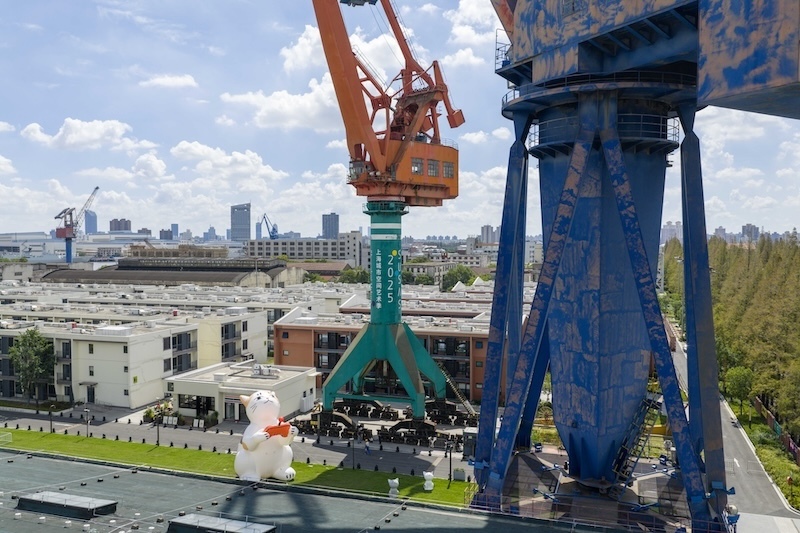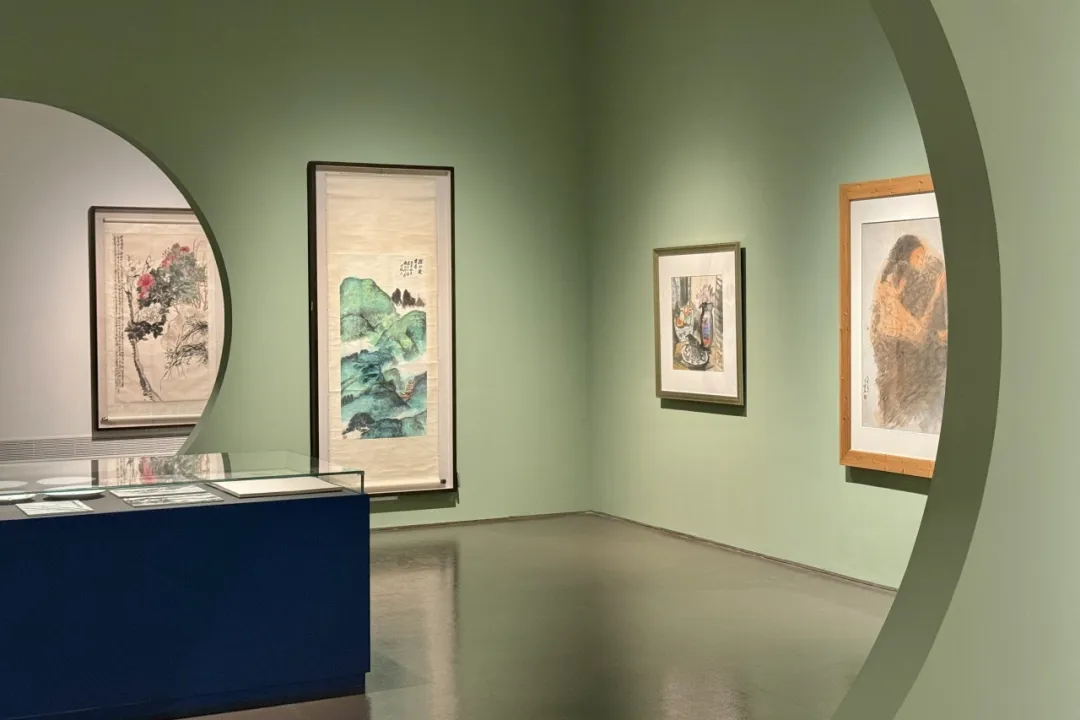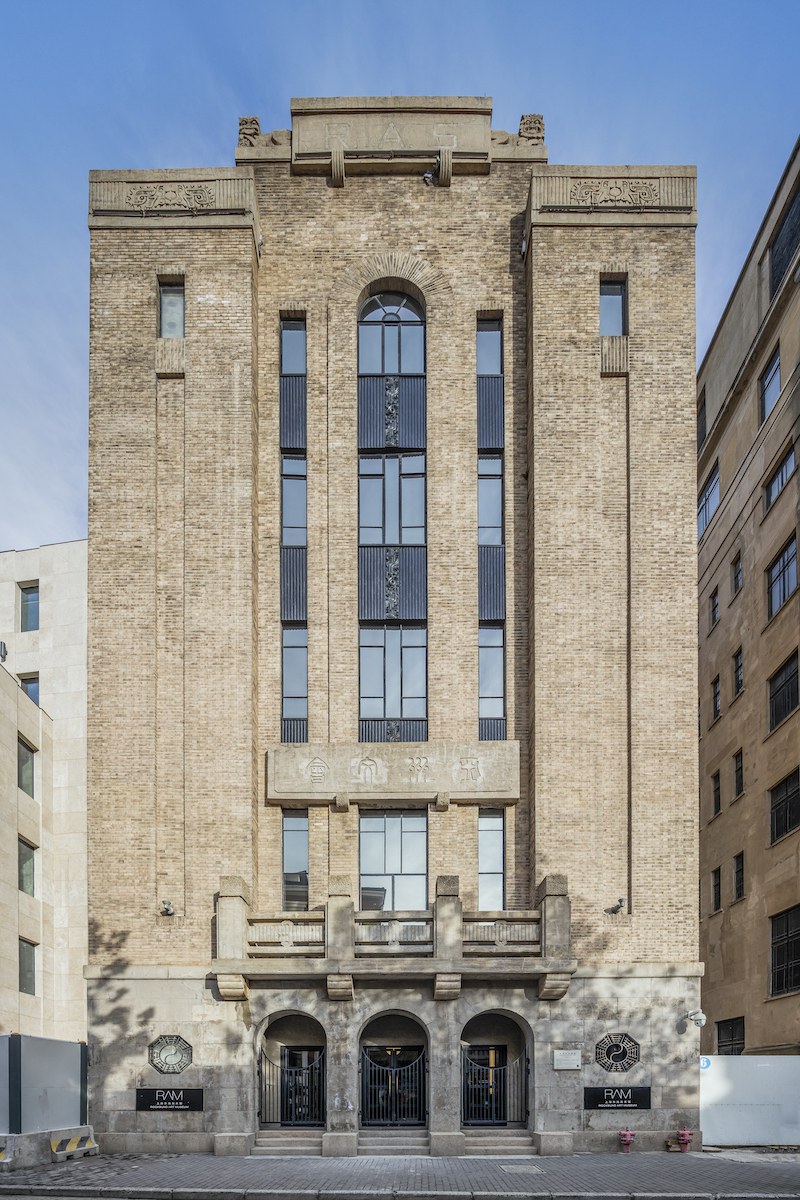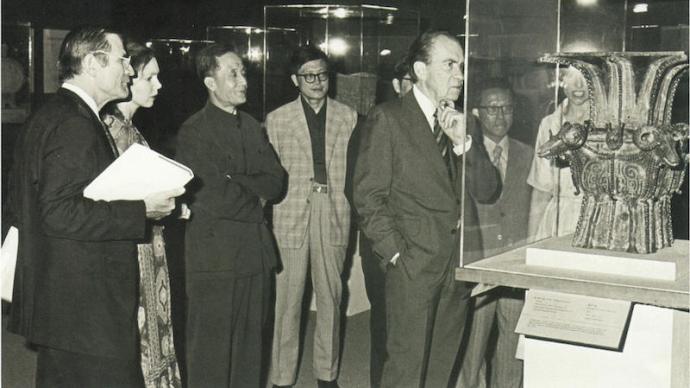
The 2025 Shanghai Urban Space Art Season is currently open to the public at its main exhibition area at Fuxing Island's Slipway Park in Shanghai's Yangpu District. At a keynote forum, Chief Curator Li Xiangning presented on the theme "Exhibitions: Propellants of Urban Culture," while several academicians and experts discussed the topic of "The Future of Quantum Urban Revitalization."
The Shanghai Urban Space Art Season has now celebrated its tenth anniversary. From awakening "urban renewal" along the Huangpu River to improving people's livelihoods with the "15-minute community living circle," and from promoting the "connected" and shared public space to achieving harmonious "cohabitation" between man and nature, this season, themed "Quantum City: Revitalizing the Future," showcases Shanghai's achievements and explores the future of urban form.
Li Xiangning, vice president of Tongji University, professor of the School of Architecture and Urban Planning, and chief curator of this year's Spatial Art Season, said that since its inception, the Shanghai Urban Space Art Season has updated more than 20 kilometers of riverside coastline, with a total investment of more than 300 million yuan, and held more than 1,900 exhibits, covering more than 100 exhibition halls and more than 1,000 urban science popularization activities.

The 2025 Shanghai Urban Space Art Season opened at the main exhibition area of Fuxing Island Slipway Park in Yangpu District, Shanghai.
Li Xiangning delivered a speech titled "Exhibitions: Propellants of Urban Culture." He believed that, looking back at the history of urban and architectural development in the 20th century, exhibitions set the direction for many major architectural and urban trends. "The 1927 Weissenhof Architecture Exhibition in Europe laid the foundation for the global rise of modernist architecture. The 1932 International Style exhibition at the Museum of Modern Art in New York, USA, brought the popularity of modernist architecture from Europe across the Atlantic, taking root in the United States and becoming a symbol of global architectural culture. A 1988 exhibition at MoMA marked the beginning of deconstructivism in architecture. At the same time, modern architecture exhibitions have played a crucial role in advancing architectural trends and urban culture, and have become a bellwether for world architecture awards. The 1976 exhibition by Mexican architect Luis Barragán is a prime example."
"Today, China's construction industry leads the world, but our urban architecture exhibitions started late and have developed slowly. Our exhibitions must not only spread urban and architectural concepts to the public, but also win positive reviews and a voice for China's urban and architectural development internationally," Li Xiangning explained, citing his curatorial work on "Our Village" at the China Pavilion at the Venice Architecture Biennale as an example. "This exhibition also demonstrates that China is at a turning point in contemporary architectural practice, no longer a testing ground for foreign architects, but a place for local experimentation. This is also an important achievement in our efforts to promote contemporary Chinese architecture through exhibitions and international events over the years."

Weissenhof Apartment Exhibition, 1927

The connection between Fuxing Island Slipway Park and Yangpu Riverside
At the forum, several academicians, experts, and representatives from the technology industry discussed the theme of "Quantum City Revitalization of the Future." Among them, Liu Hanlong, an academician of the Chinese Academy of Engineering and director of the Academic Committee of Chongqing University, delivered a speech titled "From Nature to Architecture: A New Path to Low-Carbon Transformation in Bio-Construction," analyzing the value of green and low-carbon development in future urban development.

The straw bridge in Santai County, Sichuan, is the world's first plant fiber bridge
Liu Hanlong also discussed the role of "bioconstruction" in cultural relic restoration, citing his team's collaborations with the Dazu Rock Carvings, Longmen Grottoes, Yungang Grottoes, and Dunhuang Grottoes as examples. "Preventing erosion from foreign matter is crucial in cultural relic restoration. Traditional restoration methods, such as polymers, cement mortar, and plaster, damage the artifacts themselves. Using biomineralization, we can minimize the impact. For example, we can repair a handrail using the original material of the artifact itself through microbial mineralization."

Liu Hanlong and his team participated in the restoration of Dazu Rock Carvings
Mei Hongyuan, an academician of the Chinese Academy of Engineering, a national master of engineering survey and design, and a professor at Harbin Institute of Technology, presented a talk titled "Leaping into New Fields of Future Cities: Exploring Extraterrestrial Human Settlements." He explored new approaches to extraterrestrial human settlement system design from the perspective of spatial architecture. Mei believes that the development of future cities and scientific exploration are symbiotic, with scientific exploration serving as both a driving force and a technological support for future urban development.

Conceptual design of building structures for extreme environments
The 2025 Shanghai Urban Space Art Season will run until December 13.


